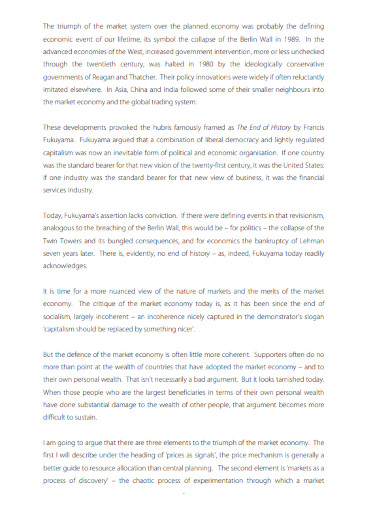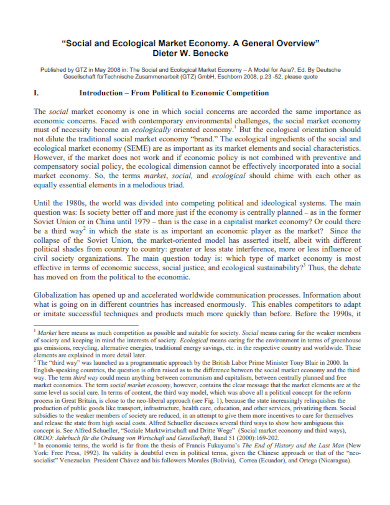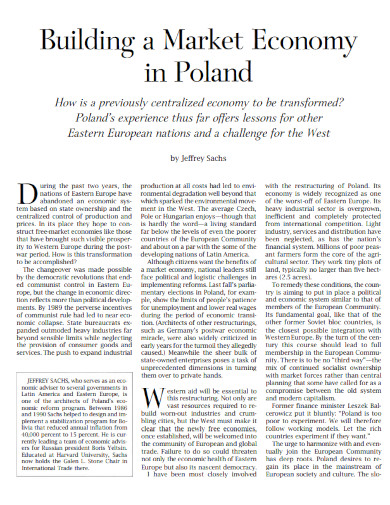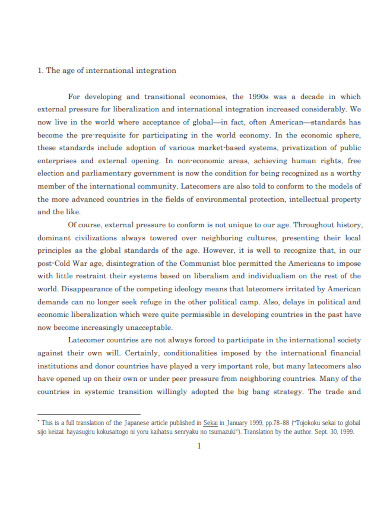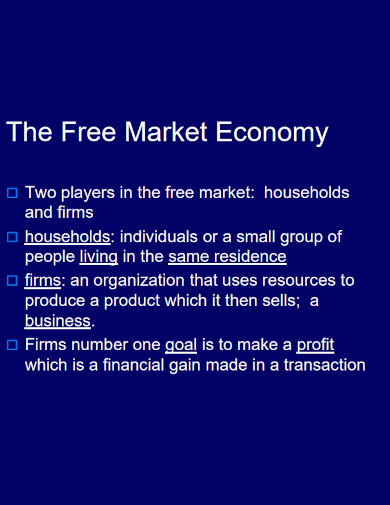6+ Market Economy Examples to Download
A market economy is an economic system where the production, distribution, and pricing of goods and services are determined by the interactions between buyers and sellers in a free market. In this type of economy, prices are set by supply and demand, rather than by government intervention or regulation. The market economy is characterized by private ownership of resources, such as land, capital, and labor, and individual decision-making based on self-interest. Market economies are often contrasted with command economies, where the government plays a dominant role in regulating economic activities. Proponents of market economies argue that they are more efficient and responsive to consumer demand, while critics raise concerns about income inequality and the potential for market failures. Despite these debates, market economies have become the dominant economic system in the world, particularly in developed countries.
1. Market Economy Template
2. Social Market Economy
3. Social and Ecological Market Economy
4. Infrastructure in a Market Econom
5. Building a Market Economy
6. Developing Countries and Global Market Economy
7. Free Market Economy Example
What is a Market Economy?
In a market economy, buyers and sellers negotiate prices and other market conditions to determine the supply and demand for products and services. In a market economy under capitalism, the allocation of resources whether renewable or natural is guided by the forces of supply and demand, which determine the prices of goods and services. In this system, individuals, rather than the government, make decisions regarding what to produce, how much to produce, and for whom to produce. This means that private individuals, consumers, and businesses own the means of production and operate with the goal of maximizing their profits. Besides social issues, Market economies are characterized by competition, which drives innovation and efficiency, as well as consumer choice, as individuals are free to buy and sell goods and services as they see fit. While market economies have many advantages, such as increased efficiency and innovation in assets, they can also lead to income inequality among private individuals and stakeholders, and market failures, which may require government intervention to address.
How to produce a Market Economy
Producing a market economy requires a significant shift in economic policy and governance. Here are the steps that a country may follow to transition to a market economy:
Step 1: Deregulate the economy
The government must remove regulations and restrictions that hinder market forces from working effectively. This includes dismantling monopolies, removing price controls, and liberalizing trade policies.
Step 2: Privatize state-owned enterprises
The government must transfer the ownership and control of state-owned enterprises to private individuals or companies. This includes selling off government assets, such as factories and infrastructure, to private investors.
Step 3: Establish property rights
The government must establish and enforce clear property rights, including intellectual property rights. This will encourage private investment and entrepreneurship, as individuals will be more confident in their ability to own and control their assets.
Step 4: Create a stable monetary policy
The government must establish a stable and predictable monetary policy, including a stable exchange rate and inflation control. This will provide a stable environment for businesses to operate and investments to take place.
Step 5: Encourage competition
The government must encourage competition by removing barriers to entry and ensuring a level playing field for all businesses. This will stimulate innovation and efficiency, leading to economic growth.
Step 6: Build a legal framework
The government must establish a legal framework that protects individual rights and enforces contracts. This will provide a predictable and stable business environment, which is necessary for long-term investment and growth.
Step 7: Invest in human capital
The government must invest in education and training to build a skilled workforce that can adapt to the changing demands of the market.
FAQs
What is the role of government in a market economy?
In a market economy, the role of the government is limited to establishing and enforcing the rules of the market, protecting property rights, and ensuring a level playing field for all businesses. The government also has a role in addressing market failures, such as externalities, natural monopolies, and information asymmetries.
How does competition drive a market economy?
Competition drives a market economy by encouraging innovation, efficiency, and responsiveness to consumer demand. Businesses are incentivized to lower prices, improve quality, and develop new products in order to attract customers and gain market share.
Is a market economy the same as capitalism?
While a market economy and capitalism share some similarities, they are not the same. A market economy is an economic system in which the allocation of resources is determined by the interactions of buyers and sellers in a free market. Capitalism, on the other hand, is a social system based on the private ownership of the means of production, in which the accumulation of capital is the primary goal. Capitalism can exist in a variety of economic systems, including market economies, mixed economies, and command economies.
It is important to note that the transition to a market economy is a complex and challenging process that may take years or even decades to achieve. The success of this transition will depend on a range of factors, including political stability, economic openness, and the commitment of the government to market-oriented policies.



